Desert Biking & Cycling Tips and Guide
With its vast and otherworldly landscapes and sense of limitless freedom, cycling in the desert provides a unique adventure for enthusiasts and adventurers. As you pedal across dry, sun-drenched terrain, the desert reveals its own set of challenges and rewards. Exploring the desert on two wheels is an opportunity to absorb the unique beauty of a seemingly harsh environment for both seasoned cyclists and newcomers to this sport. In this complete guide, we will equip you with the knowledge and tips you need to embark on a mountain bike or desert biking trip and make sure your trip becomes an unforgettable experience etched in the sands of time.
Desert Riding Basics
Desert riding basics revolve around understanding the unique challenges of cycling in arid environments. It is all about choosing the right bike, maintaining it for sandy conditions, dressing to shield yourself from the sun, and staying well-hydrated.
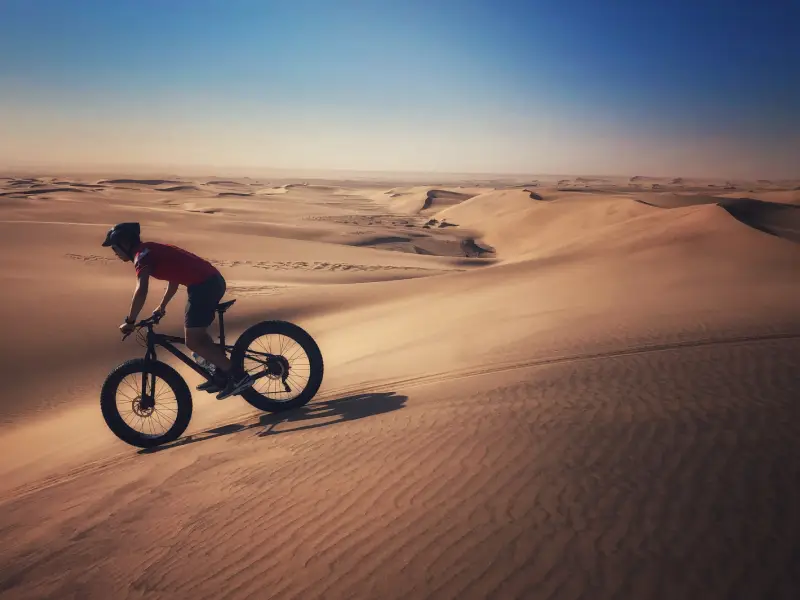
Mastering basic riding techniques on sand and gravel is essential, as is respecting the desert’s fragile ecosystem and staying safe in the extreme heat.
With these principles in mind, desert riding can become a rewarding and adventurous experience, connecting you with the unique beauty of the desert while ensuring your well-being.
How to Ride in the Desert
Careful planning and preparation are critical to embarking on a successful desert biking trip. Selecting the right time of day to ride, staying well-hydrated, and wearing appropriate clothing to shield yourself from the sun’s intense rays are fundamental.
Additionally, ensuring your bike is in peak condition, packing essential supplies, and having a contingency plan for emergencies are all essential components of a successful desert ride.
Respecting the environment and prioritizing safety will allow you to enjoy the beauty and tranquility of the wilderness while mitigating potential challenges.
Tips for Riding in the Desert
Here are the tips for riding in the desert:
Research Your Ride
Before starting a desert cycling adventure, do your homework. Use apps like TrailForks to gather essential information about the trail, including elevation gain, available water sources, total mileage, and the time of sunset. Knowing these details will help you plan your ride effectively.
Share Your Plans
Once you have chosen your route, it is crucial to inform someone about your ride plans. Let them know where you are heading and when you expect to return.
Stick to your schedule, as some desert areas may have limited or no cell service. This step ensures that you can be located in case of an emergency.

Pack Salty Snacks
Desert riding can be sweat-inducing, and sodium supply is vital. Pack salty snacks like trail mix, pretzels, jerky, electrolyte chews, or chips in your pack or jersey pockets to help maintain your electrolyte balance.
Sunscreen Protection
The desert sun can be scorching. Do not forget to use sunscreen, and consider carrying extra for reapplication during prolonged rides. Sunscreen not only guards against sunburn but can also help prevent heat exhaustion and keep you feeling cooler.
Trailside Repair Tools
When cycling in the desert, be prepared for sharp rocks and cactus spines and the likelihood of limited assistance. Carrying a tubeless tire repair kit for small punctures and a tire boot for significant damage is advisable, especially if you have tubeless tires. Additionally, packing tweezers can help in case of an encounter with cactus spines.
Desert Biking and Cycling Tips and Guide for Beginners
For those just starting out on their cycling journey, the desert offers a unique and captivating backdrop, but it comes with its own set of challenges and considerations.
These tips are tailored to help beginners embrace the thrill of desert biking while ensuring their safety and enjoyment.
Start with Short Rides
If you are new to cycling, start with shorter rides in the desert to acclimatize to the conditions and gradually increase the distance as your stamina and confidence grow.
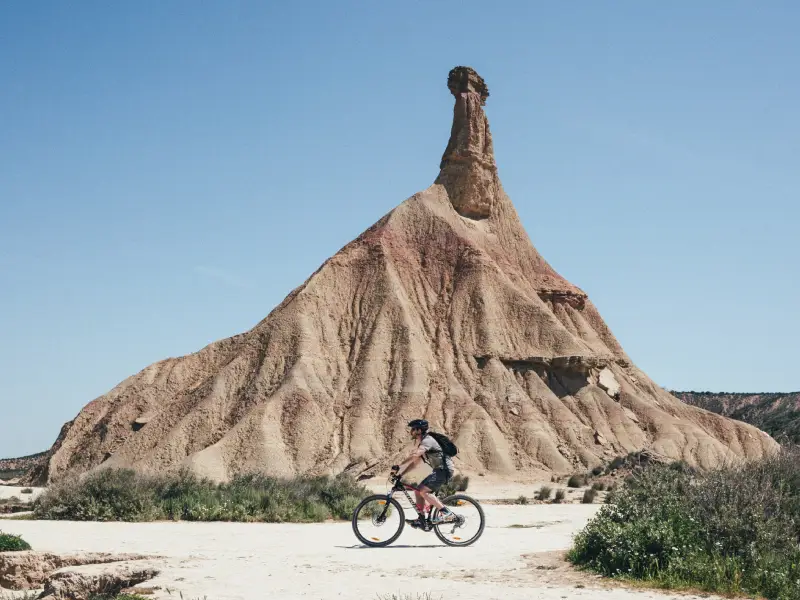
Choose Beginner-Friendly Trails
Look for well-marked and beginner-friendly trails. Many desert areas offer paths suitable for those new to off-road cycling, with less challenging terrain.
Learn Basic Bike Maintenance
Learn basic bike maintenance, such as fixing a flat tire and adjusting the saddle height. Being self-sufficient on the trail can save you from unexpected situations.
Ride with an Experienced Cyclist
If possible, ride with a more experienced cyclist who can offer guidance and help you navigate the desert terrain.
Carry More Water
As a beginner, you might not yet be used to the increased water needs of desert cycling. Ensure you have enough supply of water to stay hydrated.
Develop Proper Riding Techniques
Focus on developing good riding techniques, such as maintaining a balanced posture, using gears efficiently, and practicing controlled braking on sandy surfaces.

Get Comfortable with Your Bike
Spend time getting to know your bike. Learn about gear shifting, braking, and handling so that you feel in control during your rides.
Build Endurance Gradually
Building endurance takes time. Do not push yourself too hard at first. Focus on steady progress and enjoy the learning experience.
What Are the Do’s and Don’ts of Cycling?
Cycling is a fantastic way to stay fit, get around, and enjoy the outdoors, but it is essential to follow certain do’s and don’ts to ensure your safety and the safety of others.
Do’s:
- Wear a Helmet: Always and always wear a proper fitting helmet to protect your head in case of a fall or accident.
- Stay Visible: Wear bright or reflective clothing, especially when cycling at night, to ensure you are visible to others.
- Maintain Your Bike: Check your tires, brakes, and gears regularly to make sure they are in good working condition.
- Stay Alert: Keep an eye on your surroundings and be aware of potential dangers.
- Use Lights at Night: Equip your bike with front and rear lights when cycling in low-light conditions to increase visibility.
- Stay in Control: Maintain a firm grip on your handlebars, and practice safe braking to avoid sudden stops.
Don’ts:
- Don’t Ride Without a Helmet: Never ride without a helmet. This is a vital precaution that can prevent severe head injuries in an accident.
- Don’t Use Electronic Devices: Avoid using your phone, headphones, or other electronic devices while cycling, as they can distract you from your surroundings.
- Don’t Ride in the Dark Without Lights: Riding at night without proper lighting can make you almost invisible to others, increasing the risk of accidents.
- Don’t Neglect Maintenance: Regular maintenance is essential for bike safety. Ignoring it can lead to accidents caused by brake failure or flat tires.
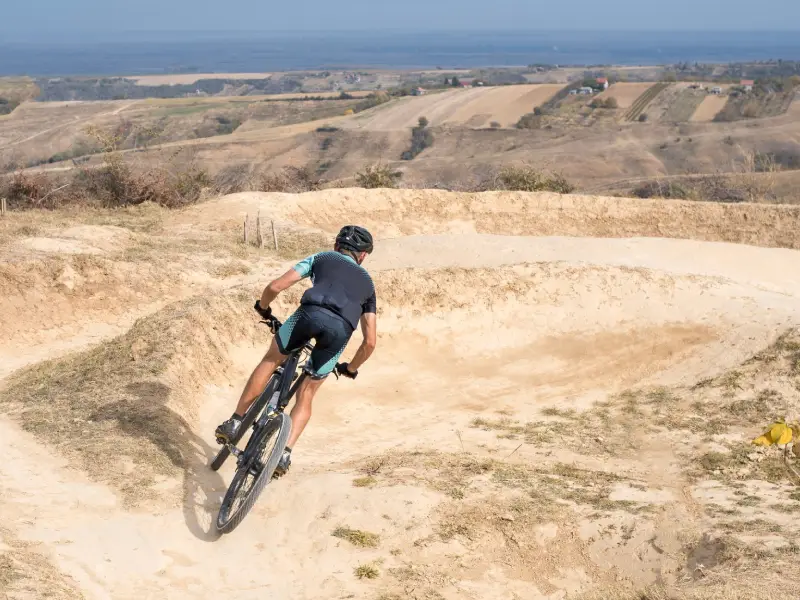
Descente Cycling Clothing
Cycling in the desert poses unique challenges due to the extreme heat, intense sun, and sandy terrain. Descente, a brand known for its quality and performance-focused cycling clothing, offers a range of products suitable for desert cycling.
Lightweight and Breathable Fabrics
The desert’s scorching temperatures make it necessary to wear clothing that is lightweight and breathable. Look for Descente jerseys and shorts made from moisture-wicking materials that keep you cool and dry during your ride.
Sun Protection
The desert sun can be unforgiving. Choose Descente clothing that provides sun protection, such as built-in UPF (Ultraviolet Protection Factor) to shield your skin from harmful UV rays. Long-sleeved jerseys and bib shorts can offer additional sun protection.
Ventilation
Proper ventilation is very important for staying comfortable in the desert’s heat. Look for cycling jerseys with strategically placed mesh panels and bib shorts that have breathable, well-ventilated fabric in critical areas.
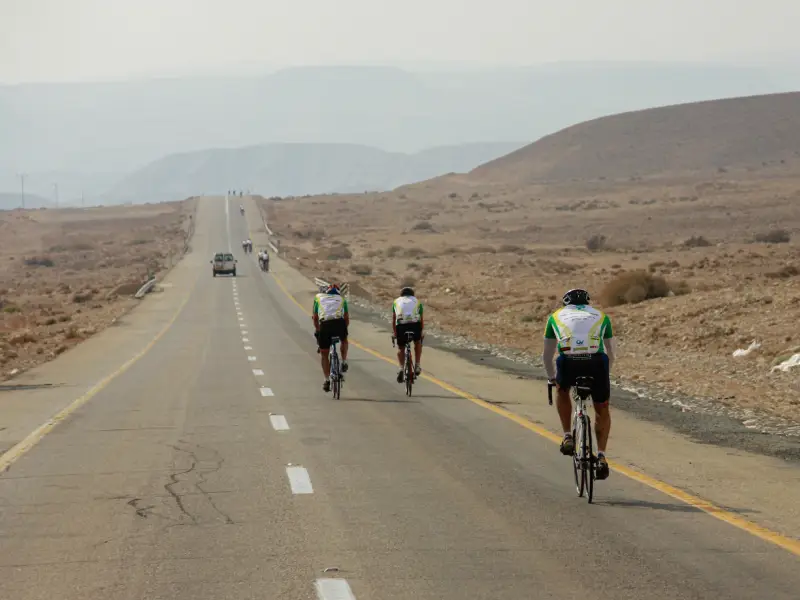
Full-Length Zipper Jerseys
Full-length zipper jerseys allow you to easily regulate your body temperature by opening up the jersey for increased airflow when it gets particularly hot.
Lightweight Jackets
While the desert is typically known for its heat, temperatures can drop dramatically at night. Carrying a lightweight, packable Descente cycling jacket can be a lifesaver when the temperature cools down or in case of unexpected weather changes.
Cooling Accessories
Descente offers cooling accessories like arm sleeves or neck gaiters with cooling properties. These can be beneficial in the desert’s heat, allowing you to stay cooler during your ride.
Comfortable Chamois
A good quality chamois in your cycling shorts is essential for long rides in the desert.
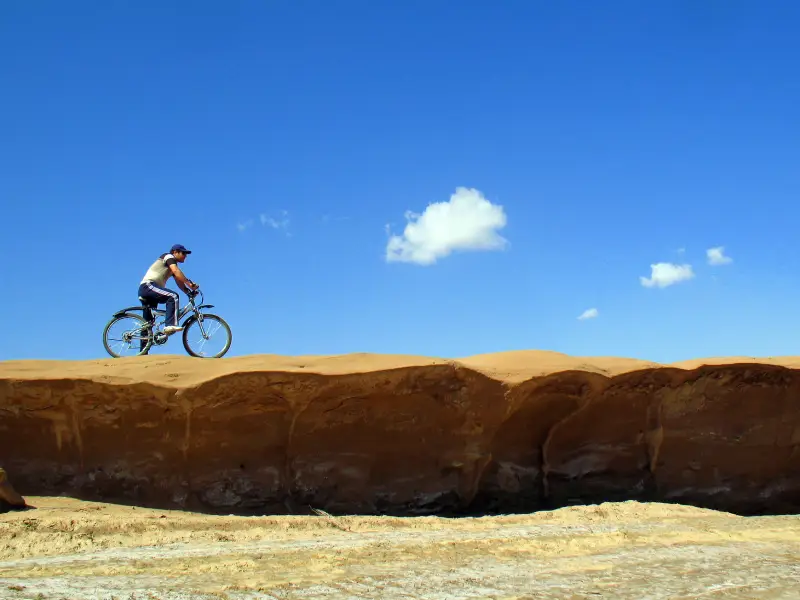
Reflective Elements
Safety is paramount, and reflective elements on your Descente clothing can enhance visibility in low-light conditions, which can be especially important if you are cycling in the early morning or late afternoon.
Well-Fitting Apparel
Make sure your Descente clothing fits well. It should be firm but not constricting while reducing wind resistance.
Final Word
“A Guide to Desert Bikepacking” acts as your compass, guiding you through the fascinating world of desert cycling. The desert, with its enchanting sand dunes, rugged canyons, and vast expanses, is an unparalleled canvas for adventure and self-discovery.
By following the advice provided in this comprehensive guide, you can maximize the enjoyment of your desert bikepacking experience, all while respecting the fragile ecosystems that make the desert such a unique environment.
As you enter this challenging yet rewarding terrain, remember that preparedness, safety, and environmental stewardship are your allies. So, saddle up, start your desert cycling odyssey, and let the timeless charm and wonder of the desert unfold before you, leaving tire tracks of your own in the sands of this ever-changing, magical landscape.
Are you a desert fan? Iran is a good destination for desert lovers; Check out Iran desert article for more information about deserts of Iran.

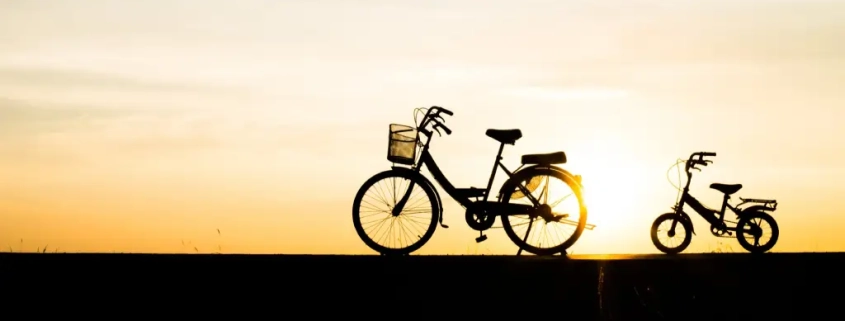



Leave a Reply
Want to join the discussion?Feel free to contribute!